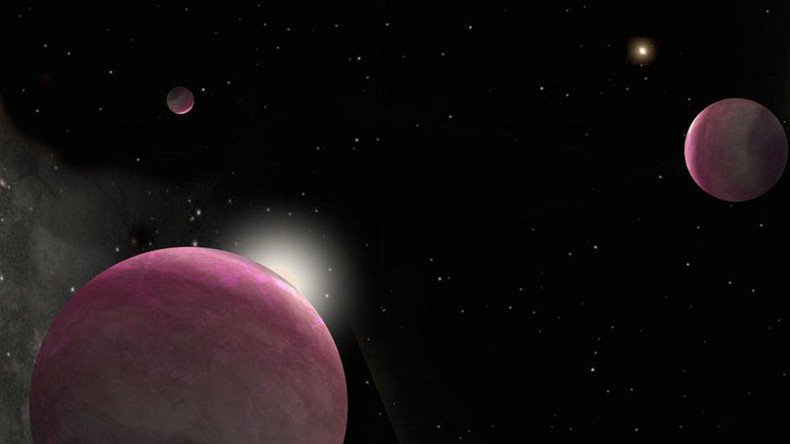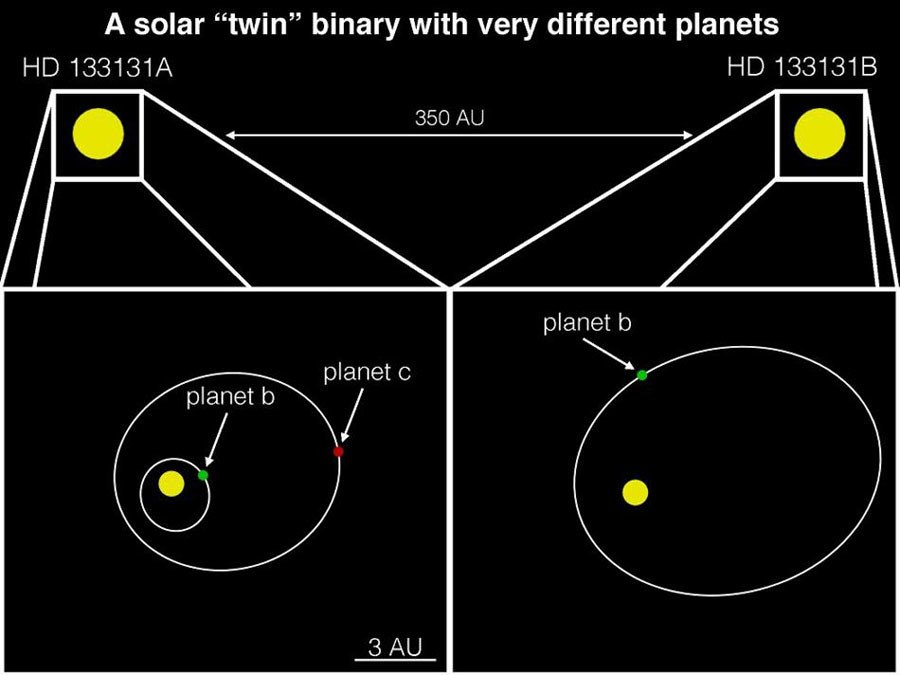Discovery of three giant planets could help find sustainable worlds

Researchers have found three giant planets orbiting twin stars outside of our solar system which could help figure out where habitable planets can be found.
The largest of the three enormous ‘exoplanets’ found by researchers from the Carnegie Institution for Science, is 2.5 times larger than Jupiter and more than 750 times bigger than Earth.
Triple giant 'Tatooine' worlds have been discovered orbiting twin sun-like stars 🌅: https://t.co/n0x3VJzYHZpic.twitter.com/576F338T0T
— NASA PlanetQuest (@PlanetQuest) September 13, 2016
That planet orbits a star called HD 133131B which is part of binary star system with HD 133131A. A binary star system involves two stars which are close enough together that their gravitational movement causes them to orbit each other.
Star HD 133131A hosts two planets, one of which is at least 1.5 times Jupiter’s mass, while the other is at least half Jupiter’s mass.
Astronomers have found several planets in recent years that are very different from those in our solar system. The most-common exoplanets detected are so-called ‘super-Earths’ which are larger than our planet but smaller than Neptune or Uranus.
READ MORE: Home from home: Scientists may have discovered an Earth-like planet with water
But exoplanets the size of those found orbiting HD 133131A and HD 133131B are very rare, according to NASA, and have only been detected around a small number of stars.
The stars, HD 133131A and HD 133131B, are extremely close together - particularly considering they are orbited by such massive planets - sitting 360 astronomical units (AU) apart. One AU is equal to the distance between the Earth and the sun (nearly 150 million kilometers).
‘Proxima b’ move-in ready? Closest ever Earth-like planet confirmed by scientists https://t.co/O0tXHSw11Lpic.twitter.com/C8j4YjytqO
— RT America (@RT_America) August 25, 2016
The next-closest binary system that hosts planets is comprised of two stars that are about 1,000 AU’s apart. Researchers said this kind of system is incredibly rare, and the latest discovery makes it one of only seven ever found.
The researchers point out that this system is even more unusual because both stars are “metal poor,” meaning that most of their mass is hydrogen and helium, as opposed to other elements such as iron or oxygen. Usually, stars that host giant planets are "metal rich.”
Researchers say Jupiter’s gravitational pull is likely to have significantly influenced the shape of our solar system as it was forming, and the scarcity of Jupiter-like planets could be key in explaining why our system is different from all the others found to date.

The findings, which may help explain the influence that giant planets have over a solar system’s architecture, have been accepted for publication in The Astronomical Journal.
Johanna Teske, who led the research, explained: “We are trying to figure out if giant planets like Jupiter often have long and, or eccentric orbits.”
“If this is the case, it would be an important clue to figuring out the process by which our solar system formed, and might help us understand where habitable planets are likely to be found,” she added.











